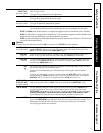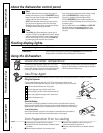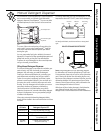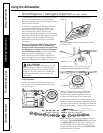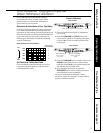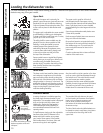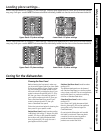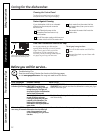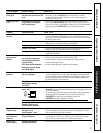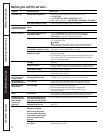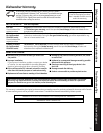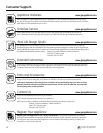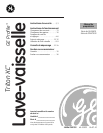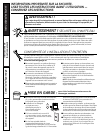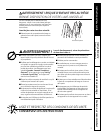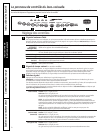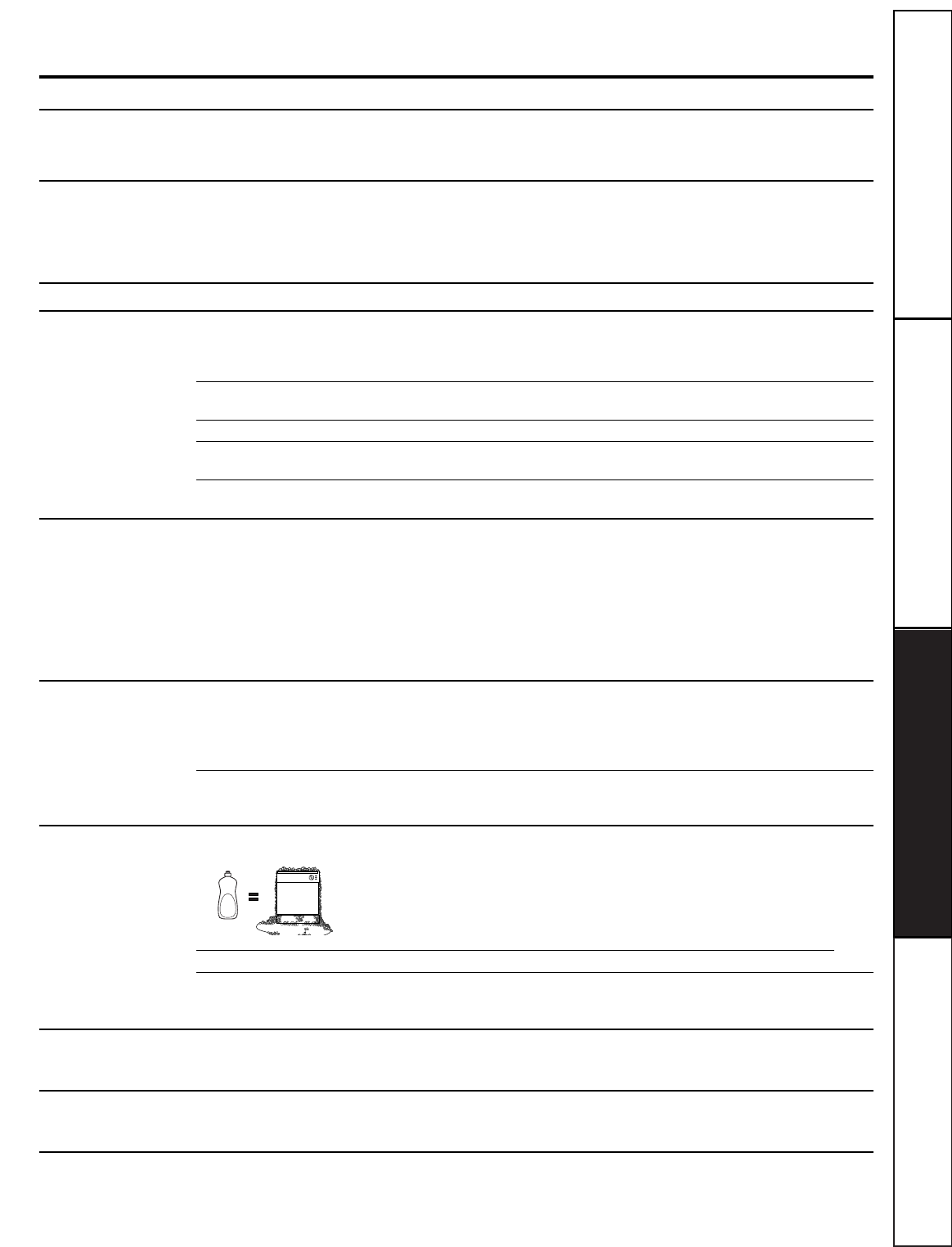
Consumer Support
Troubleshooting TipsOperating InstructionsSafety Instructions
Problem Possible Causes What To Do
Dishes and flatware Low inlet water temperature • Make sure inlet water temperature is correct (see page 8). Turn on the hot
not clean water faucet nearest the dishwasher, let run until the water temperature
stops rising. Then start the dishwasher and turn off the faucet. This insures
the entering water is hot.
Water pressure is temporarily low • Turn on a faucet. Is water coming out more slowly than usual? If so, wait
until pressure is normal before using your dishwasher.
Air gap or disposer is clogged • Clean the air gap or flush the disposer.
Improper rack loading • Make sure large dishware does not block the detergent dispenser or the
wash arms. See the Loading the dishwasher racks section.
No air gap or high drain loop • Verify that you have an air gap or a high drain loop. Refer to the
Installation Instructions.
Spots and filming • Use rinse agents to remove spots and prevent new film buildup.
on glasses and
• Make sure water temperature is at least 49°C (120°F).
flatware
• Load dishwasher as shown in the Loading Place Settings section.
• Make sure detergent is fresh.
• If water is extremely hard, a softener may be required.
Cloudiness on Combination of soft water and • This is called etching and is permanent. To prevent this from happening,
glassware too much detergent use less detergent if you have soft water. Wash glassware in the shortest
cycle that will get it clean. Recalibrate the SmartDispense
™
system if you
are using it (see page 9). Do not use the manual detergent dispenser and
the SmartDispense
™
at the same time.
Water temperature entering • This could be etching. Lower the water heater temperature.
the dishwasher exceeds
65°C (150°F)
Suds in the tub Correct detergent • Use only automatic dishwasher detergents to avoid sudsing. Cascade
®
and
wasn’t used Electrasol
®
Automatic Dishwashing Detergents have been approved for use
in all GE dishwashers.
• To remove suds from the tub, open the dishwasher and let suds dissipate.
Close and latch the dishwasher. Pump out water by touching the
START/RESET pad once; then 30 seconds later, touch the
START/RESET pad again. Repeat if necessary.
Rinse agent was spilled • Always wipe up rinse agent spills immediately.
Detergent placed in manual • Use SmartDispense
™
or the manual detergent dispenser, but not both.
detergent dispenser and
SmartDispense
™
dispenser
Detergent left in Dishes are blocking the • Reposition the dishes, so the water from the lower spray arm can
dispenser cups detergent cup or flush the detergent cup or the outlet on the SmartDispense
™
system.
SmartDispense
™
outlet See the Loading the dishwasher section.
Water in the Cap not tightened after • Use a turkey baster to remove as much water as possible from the
SmartDispense
™
filling the dispenser SmartDispense
™
dispenser and refill it as normal. Be sure to tighten
dispenser the cap fully to prevent water from entering the dispenser.
Black or gray Aluminum utensils have • Remove marks with a mild, abrasive cleaner.
marks on dishes rubbed against dishes
Error Messages Possible Causes What To Do
Beeping at the end This is normal. The dishwasher • To turn off the double beep indicator (or re-activate it if it was previously
of the cycle will beep twice at the end of the turned off), press the HEAT DRY pad 5 times within 3 seconds.
cycle A triple beep will sound to indicate the end-of-cycle beep option
has been turned on or off.
Low Detergent light SmartDispense
™
has less than • Fill the SmartDispense
™
reservoir with liquid detergent. After filling the
is ON 10 cycles worth of detergent reservoir, the LOW DETERGENT light will turn OFF once the door is closed.
left in the dishwasher If you are not using the SmartDispense
™
feature, turn off the low detergent
light by pressing the ADDED HEAT pad 5 times within 3 seconds.
Extremely hard water
Low inlet water temperature
Overloading the dishwasher
Improper loading
Old or damp powder detergent
Rinse agent dispenser empty
Too little detergent
13



